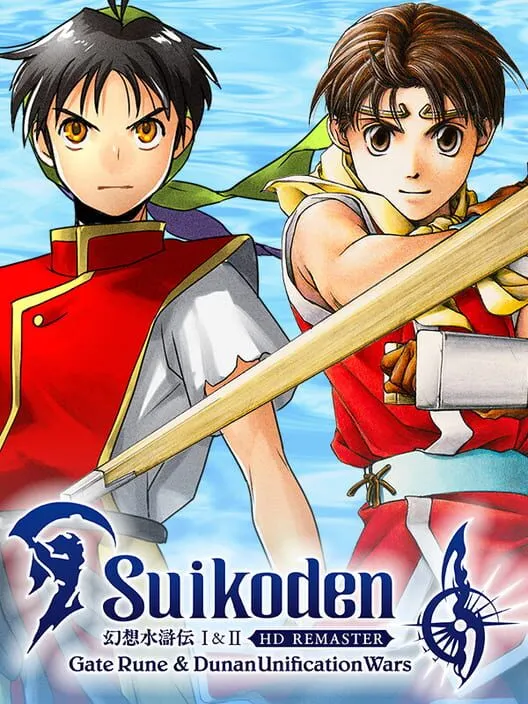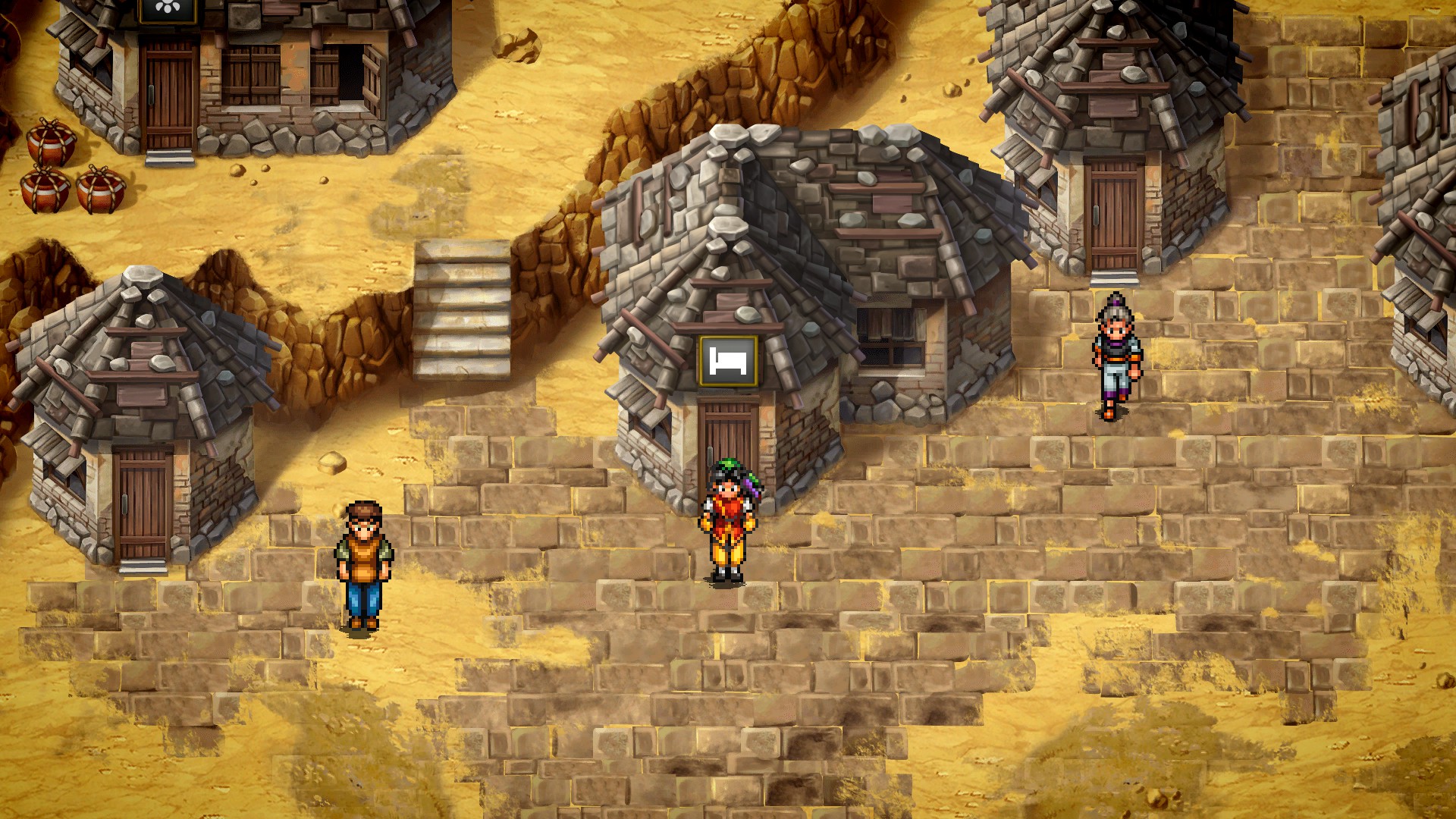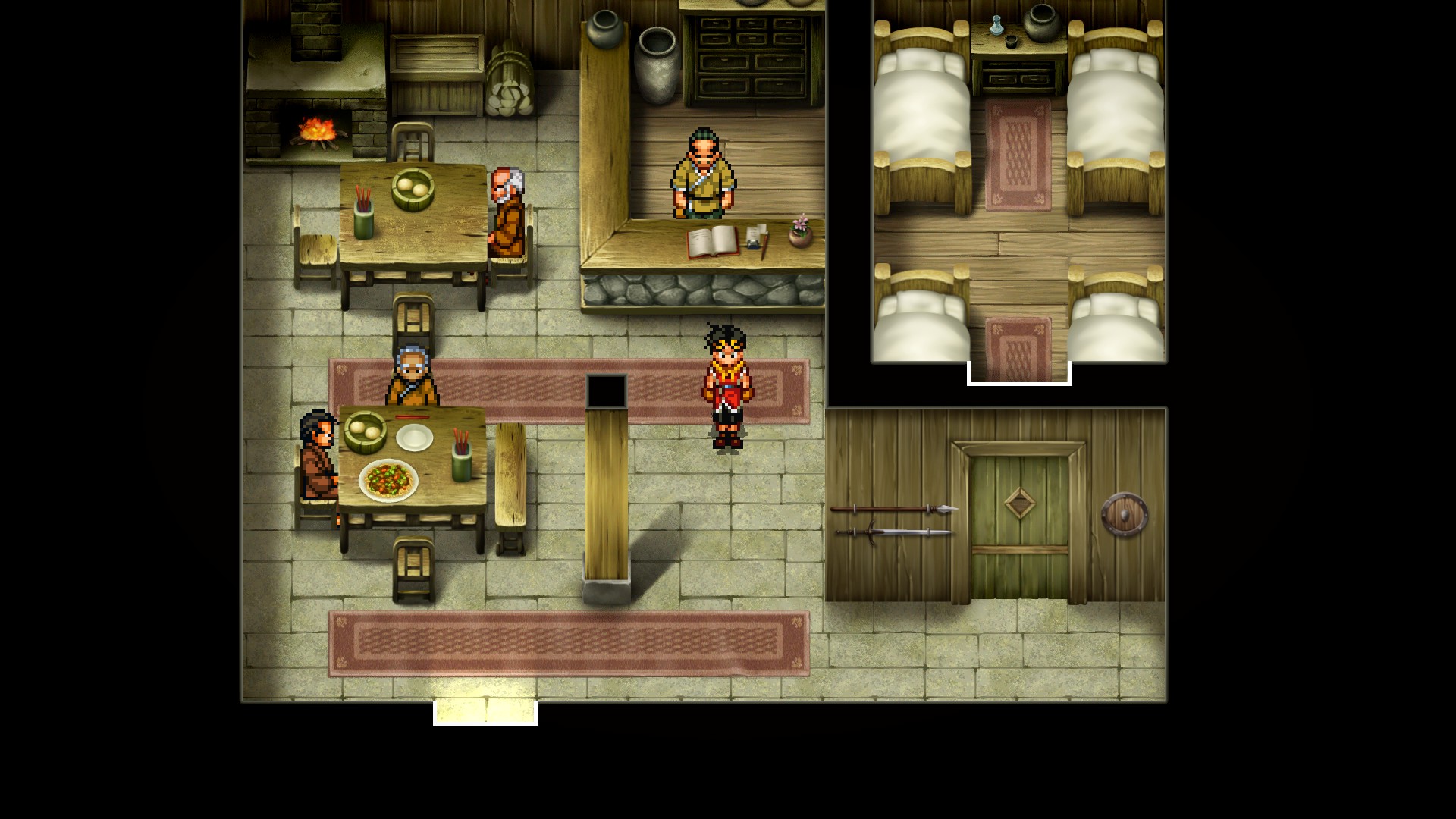Search
[{{{type}}}] {{{reason}}}
{{/data.error.root_cause}}{{{_source.title}}} {{#_source.showPrice}} {{{_source.displayPrice}}} {{/_source.showPrice}}
{{#_source.showLink}} {{/_source.showLink}} {{#_source.showDate}}{{{_source.displayDate}}}
{{/_source.showDate}}{{{_source.description}}}
{{#_source.additionalInfo}}{{#_source.additionalFields}} {{#title}} {{{label}}}: {{{title}}} {{/title}} {{/_source.additionalFields}}
{{/_source.additionalInfo}}- Details
- Category: Computer
- By Daniel Cullen
- Hits: 1491
Suikoden I&II HD Remaster Gate Rune and Dunan Unification Wars (PC)

Suikoden I&II HD Remaster Gate Rune and Dunan Unification Wars
Developed By: Konami
Published By: Konami
Released: March 6, 2025
Available On: Microsoft Windows, PlayStation 4, PlayStation 5, Xbox One, Xbox Series X|S, Switch
Genre: Turn-Based Roleplaying
ESRB Rating: E10+-Teen (Fantasy Violence, Mild Blood, Suggestive Themes, Language, Simulated Gambling)
Number of Players: Singleplayer
Price: $49.99
(Humble Store Link)
Konami at the time of this writing seems to want to regain the trust of gamers after having expended that trust, leaving many of their founding series to wither on the vine. To show their seriousness in this regard, they released a remaster of the first games in their Suikoden series. Suikoden I & II HD Remaster: Gate Rune and Dunan Unification Wars is generally a competent remaster, and one that has met with a warm reception.
A bit of background first. Suikoden as a series is loosely based on "Water Margin", a 12th-century Chinese novel about 108 outlaws who band together to resist an oppressive government. The Suikoden games loosely adapted most of the core themes for their games, including needing to recruit 108 "Stars of Destiny" (after the terminology of the novel), having a main headquarters located near a major body of water, as well as a few other lesser shoutouts. The two games in this remaster are both a mix of classic turn-based RPGs crossed with military simulation in which the player becomes the leader of an army resisting an oppressive government (either in a civil war or against an invading power).
The first Suikoden stars the son of Scarlet Moon Empire general Teo McDohl. His son (commonly canonized as Tir in official material) winds up having to oppose the Empire after discovering a corrupt side to its workings, eventually resulting in him leading an army to topple the Empire as a result. The second game is set a few years later, in the northern Jowston City-States. The game begins with your hero (commonly canonized as Riou in official material) as a volunteer member of the Highland Army, which is supposed to be concluding a truce between the City-States after a long war. After having discovered treachery on their own side to sunder this agreement, they are forced to join the City-States in opposing Highland.
Both games follow similar patterns. The RPG side of the game involves assembling a party of various recruitable characters to explore certain areas, find other recruits, and finish quests. The military side of the game involves army battles against opposing forces in a turn-based strategy format, where wise use of your own military forces is required to defeat the other side to advance the story. Both sides of the gameplay will be required to reach the endings. Depending on whether the player recruits all of the required "Stars of Destiny", they can achieve different endings.

Strong Points: Remasters two classic RPGs with much-improved translation and graphical effects
Weak Points: Remaster is a bit too faithful, the first Suikoden interface could have been upgraded to the one from the second game
Moral Warnings: Fantasy RPG violence; mild displays of blood; some harsh language (b**t**d, s***); sexual innuendos and some revealing outfits; depictions of the undead and mentions of occult powers including astrology; Smoking and drinking depictions; gambling depicted in-game, with some occasions the player must partake to progress game; options to choose military actions in contravention to the laws of war
Graphically, the original sprite-based pixel art graphics were generally overhauled with modernized particle effects, redrawn backgrounds and set pieces, and an overall higher level of polish. The character sprites are largely the same as the original titles, though there are now diagonal running sprites for the main characters. The original low-resolution FMV videos have been replaced with much higher quality assets. Finally, to accommodate widescreens, some alterations were made to fit higher resolutions more smoothly.
Sounds and music are generally the same as the original releases, though some minor cleanup has been made to some of the sound samples. Due to printing issues with the original Suikoden II, certain music would not play, and the remaster restores these tracks. The general music style of both games features a lot of genres ranging from ambient to orchestral. The second Suikoden features some of the best music in the series, especially the dramatic tunes that play while fighting major villains like Luca Blight and Neclord. While the army battle music in Suikoden I is generally not that special, the second game has some excellent tracks, especially the major battle theme "Battlefield Without Light".
These titles can be controlled by either a keyboard and mouse or by any Steam-supported controllers. While the in-game tutorials generally are designed around the use of a controller, keyboard use is very doable. While keys are not remappable, they are fairly intuitive and easy to pick up. One point of notable annoyance is that the Suikoden I interface is still unimproved in function despite the second title featuring a lot of optimizations to make menu surfing far less of a chore.
Stability is excellent. It will run natively on Microsoft Windows and will run fine out of the box on Linux with Steam Proton. This title is rated Playable on the Steam Deck and functions more or less flawlessly. It's worth noting many errors, glitches, and poor translations have been fixed in the remasters. The retranslation is generally more true to the original Japanese versions. As it uses the Unity engine, these titles are unofficially moddable as well.
Morally, being games that cover themes such as war, supernatural powers, and other heavy topics, there are some concerning elements.
Most violence is RPG style "give orders and watch it happen". There is some mild display of blood in some story scenes and some scenes where the enemy is depicted killing civilians in cold blood. While this latter part takes place mostly without explicit details, the meaning is rather clear.

Higher is better
(10/10 is perfect)
Game Score - 88%
Gameplay - 18/20
Graphics - 8/10
Sound - 8/10
Stability - 5/5
Controls - 5/5
Morality Score - 42%
Violence - 4/10
Language - 5/10
Sexual Content - 4/10
Occult/Supernatural - 3/10
Cultural/Moral/Ethical - 5/10
Language can get rather harsh in places (as opposed to the original translation), with some occasional uses of profanity, like b**t**d and s***. There are some sexual innuendos and implied references to out-of-wedlock sexual liaisons. A few female outfits are also fairly revealing, though in low-detail pixel format most of the time.
A recurring supernatural motif is the "True Runes" of the universe, commonly depicted as controlling the balance of the Suikoden world. They can be used for both good and evil. While religion is not specifically addressed most of the time, there is a confirmed presence of necromancy (albeit this is considered beyond the pale in-universe) and there is also a major presence of astrology and fortunetelling.
Morally, your main characters generally conform to the laws and customs of war in both games. You can choose to execute most captured enemy generals, but aside from one choice early in the first game which has no penalty, this is considered inadvisable from a gameplay standpoint, as many of your former enemies can be convinced to join your side if shown mercy. However, there is an optional bad ending path late in the second title to abandon your responsibilities to your troops, and persisting in this path results in the deaths of many major characters and a bad ending in which you will be known as a deserter. Finally, smoking and drinking are depicted with some frequency, as well as gambling. This latter one, mostly depicted as various dice games, will be required at some points in both games to progress certain plot areas.
Overall, this remaster collection is well done. Technically, it has a far more competent translation than the original releases, fixes numerous glitches and errors in the original titles, will run on fairly modest hardware, and provides many hours of fun for each title. Morally, these games cover many themes not recommended for anyone who is not at least a reasonably mature teenager on up. As someone who loved the original titles, Suikoden I & II HD Remaster is a worthy remaster and is very highly recommended.








